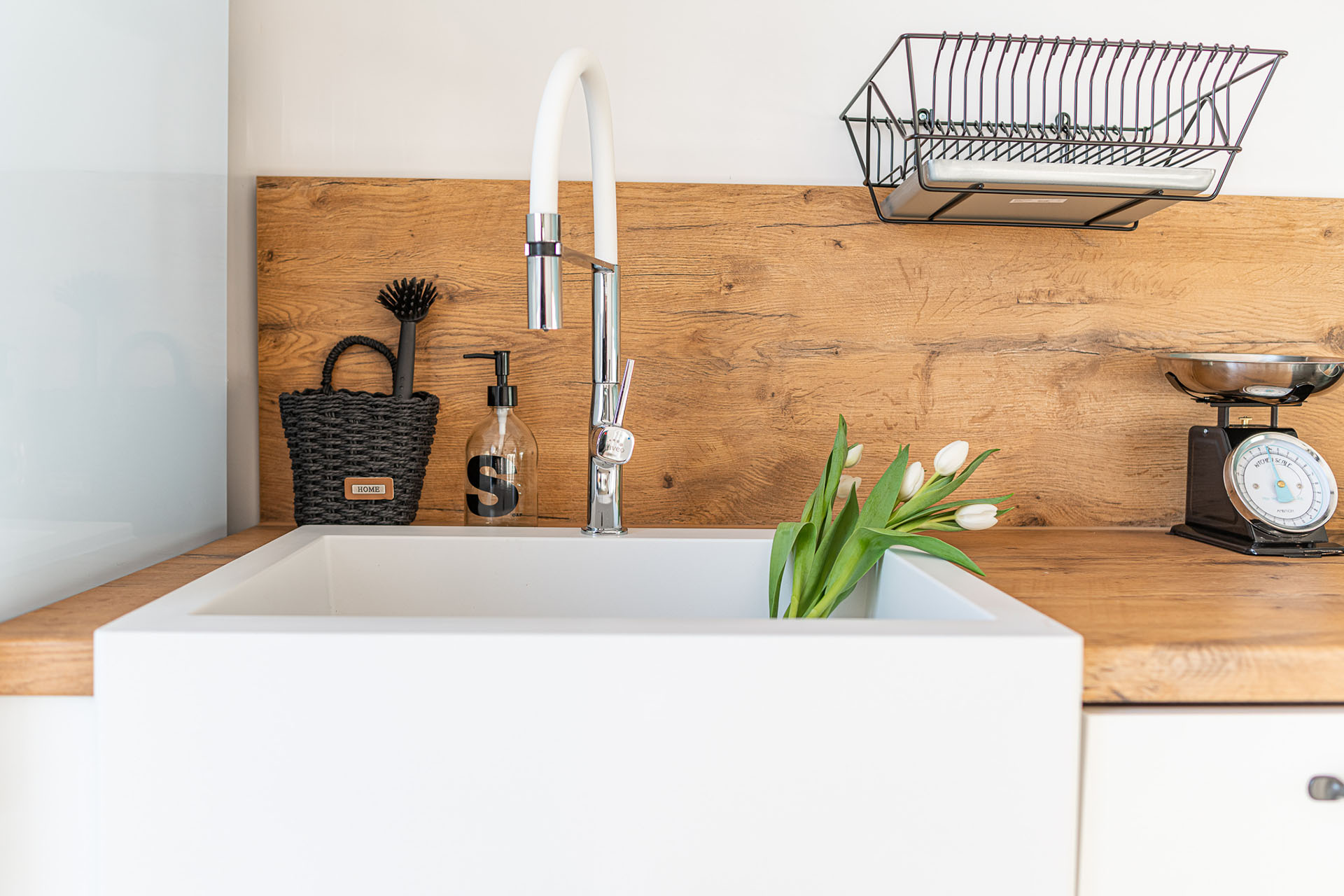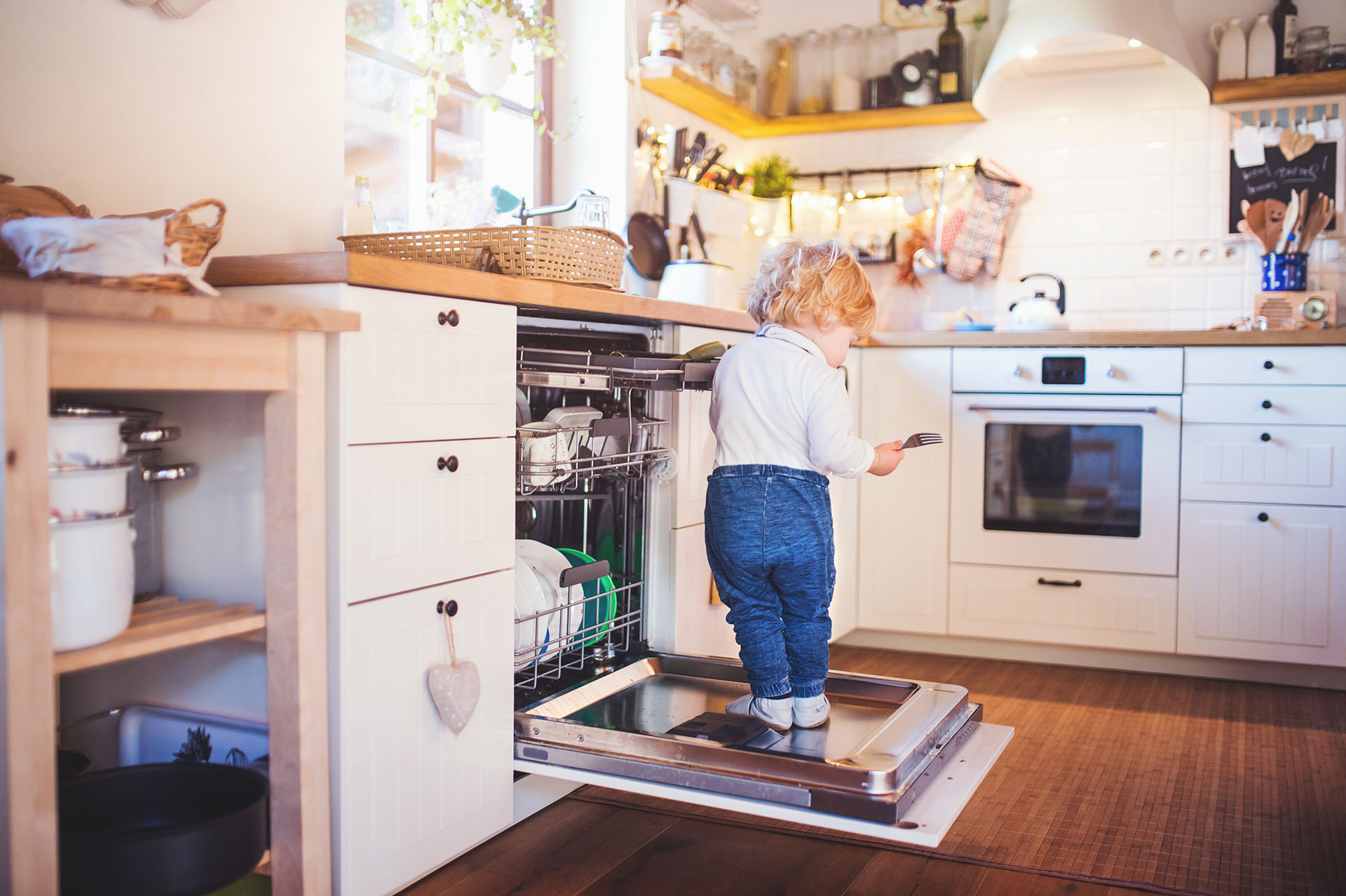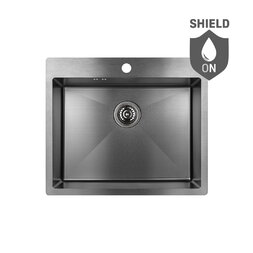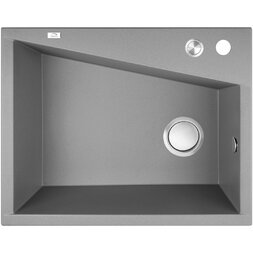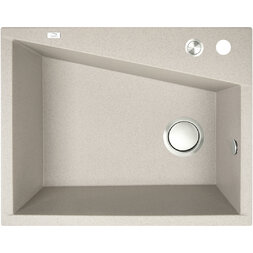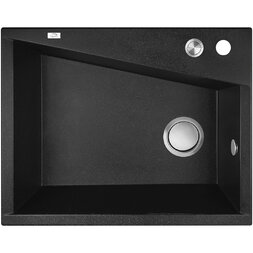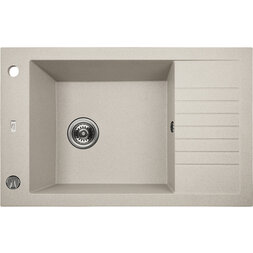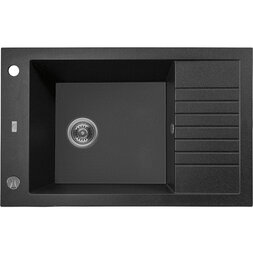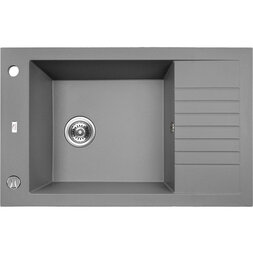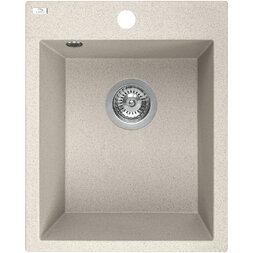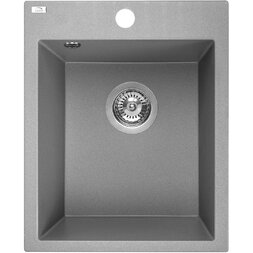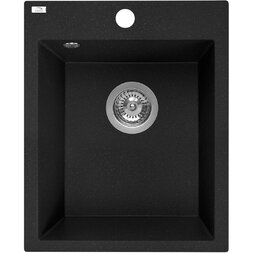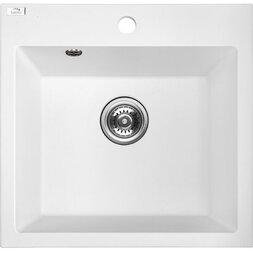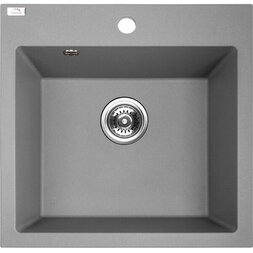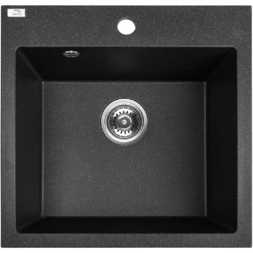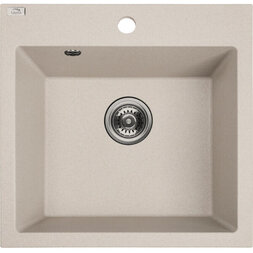Your kitchen is an important part of your home, a place full of magic. But keeping it tidy and clean is not always so easy. Especially when it is small and you need to use every centimetre of space.
![]()
Although each kitchen has a different layout, we always carefully plan where all the necessary items should be placed. And when it comes to home appliances, it is crucial to find a proper location for a dishwasher, now commonly present in Polish kitchens. It would be best to place it so as to make its loading and unloading fast and easy. No doubt having a dishwasher changes our lives! It saves us hours of standing at a sink where our hands would be exposed to hot water and harsh detergents. But even though this kitchen appliance makes our everyday lives easier, there is no need to mention that it cannot replace a sink. A kitchen sink is an essential functionality and in addition, more and more often it has also aesthetic qualities. It is important that our sink is made of a durable material resistant to most external factors such as high temperature, thermal shock or scratches.
Additionally, the increasingly wide product range allows us to easily match a sink up to our space in terms of its dimensions, number of bowls, whether it comes with a drainboard or not, its material and finish. Laveo’s offer comprises granite, steel (Marmara) and steel & glass (Kongo).
![]()
A kitchen sink provides a space adequate to accommodate all kitchenware, plates and cutlery. Deep bowls of Grenada or Pionier models will allow you to wash baking trays or large pots freely. And owners of small spaces can choose from among single-bowl models, like Chichi, Alena. The group of granite sinks has been joined by the Komodo model combining a deep bowl with an apron front that reaches beyond the cabinet’s edge. This specially designed apron gives us comfort during everyday use, because we can stand as close to the sink edge as possible and thus maintain good posture while washing.
The front part of the sink, called an apron, will also protect our kitchen cabinets against flooding as it extends beyond the furniture. The Marmara model, on the other hand, provides a perfect combination of functionality and unique design. The deep and entirely soundproof bowl of this steel sink makes everyday activities easier. Despite its austere and simple form, this model delights with its distinct pink gold or graphite finish.
No matter what sink model you choose, you can use its potential to maximum advantage, from filling jugs, washing kitchen equipment or dirty wellingtons, all the way to watering your flowers. Still, a dishwasher is of great help, equally effective as it allows you to remove greasy stains from dishes and leftovers from pots, pans and bakeware. But it is worth getting acquainted with its purpose and golden rules, as unfortunately you cannot load it with everything you want.
![]()
Here is a list of what exactly is and what is not dishwasher safe, thanks to which you will never again wonder whether your aunt’s silver-plated spoons will survive the cycle. (A hot tip: you better wash them by hand if you want them to stay silver).
Things that are and are not dishwasher safe:
NOT RECOMMENDED
- sterling silver cutlery and gold-coloured cutlery
- ceramic knives
- chef’s knives
- copper utensils
- hand-painted ceramics and stoneware
- blender
- crystal
- pressure cooker lids
- aluminium
- brass, bronze, tin
- cast iron
- non-stick cookware
- pizza stone
- thermos
- wood
- acrylic dinnerware
- clothes
DISHWASHER SAFE
- baby bottles
- teats, soothers and teethers
- bath toys
- dog toys
- dish sponge/kitchen brush
- ceramic bakeware
- glass
- enamelware
- preserving jar lids/li>
- oven racks
- plastic dinnerware
- stainless steel (cutlery, cookware)
- casserole dishes
- double-bottom glasses
- make-up brushes, hairbrushes
- rubber footwear
- cooker hood filter
The above listed products that cannot be put in a dishwasher form the basics of damage protection. In a dishwasher, high-carbon steel knives will corrode and lose their sharpness, ceramic knife blades will become blunt, Teflon-coated pans will lose their properties and burn the food, wooden items such as cutting boards, spoons or chopsticks will warp and crack, and enamel will chip off. Finally, a few tips for using a dishwasher. It really matters how dishes are placed in a dishwasher. Many items can be dishwashed only in the upper basket. For the loaded dishes to be cleaned thoroughly, many of them must be put in the lower basket. Glasses, bowls, cups and large serving platters should go on top. Plates, pots, pans and kitchen utensils should be at the bottom. Some items may melt, warp or crack if put in a wrong place. Before loading, rinse the dishes!
Remember that dishes with large pieces of food should be cleaned before loading them into a dishwasher. Large leftovers may clog a dishwasher drain or land on clean dishes. You do not have to rinse the dishes before putting them in a dishwasher, but you should at least scrape them. A 3.5-inch sink strainer will help you catch any leftovers so that they would not get into the siphon trap.
However, if it may take a few days before your dishwasher is full enough, rinse the dishes prior to putting them inside, otherwise you will have to reckon with an unpleasant smell every time you open the door of your appliance.
Following the above advices, you can easily maintain the quality of your dishwasher and the items it washes in the long term. Nevertheless, remember that regardless of the material your sink is made of, you should take care of it as well, cleaning it as often as needed with the use of appropriate detergents.
